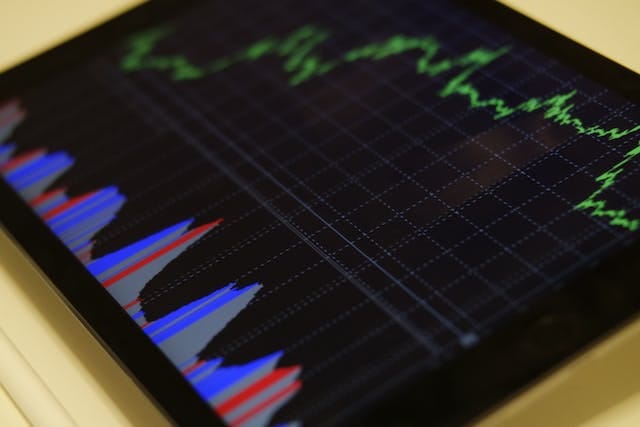Economic Stimulus Packages: What You Need to Know
Stay informed on economic dynamics with our guide: Economic Stimulus Packages. Understand the essentials to navigate financial opportunities and challenges during times of stimulus

The global economic landscape has seen its fair share of volatility, especially in the wake of crises. If there's anything that's become clear during these turbulent times, it's the pivotal role that economic stimulus packages play in stabilizing economies. From the intricacies of fiscal policy to the profound impacts on business and employment, delving into the world of economic stimulus measures is essential for analysts, business owners, and policy enthusiasts alike to navigate the financial tides effectively.
This comprehensive guide is designed to provide clarity on what economic stimulus packages entail and why they matter, showcasing a broad spectrum of approaches and their outcomes. Having a firm grasp on this subject is not just about economic literacy; it's about gaining a deep insight into the levers that move the economy and how those forces can be harnessed to bring about positive change.

What Exactly are Economic Stimulus Packages?
Imagine a toolbox filled with policies and measures aimed at kickstarting economic activity. That's the essence of an economic stimulus package—an assemblage of initiatives designed to reignite growth, stabilize markets, and foster confidence during times of economic downturn.
Stimulus Defined
Stimulus in this context refers to the action taken by governments to boost spending by individuals and businesses, with the ultimate goal of reviving growth. The variety of these packages can be as diverse as the challenges they aim to tackle, but their unifying trait is the injection of financial resources into the broad economy.
Historical Significance
The concept of economic stimulus has roots that delve into the very fabric of economic history. From Franklin D. Roosevelt's New Deal in response to the Great Depression to the recent measures implemented in the wake of the 2008 financial crisis, these packages have been an integral part of the economic recuperation story.
Overview of Economic Stimulus Packages
To comprehend the full impact of economic stimulus measures, we must first understand their underpinning philosophies and the tools through which they are executed.
The Purpose of a Stimulus Package
The primary objective of a stimulus package is to reinvigorate a stagnant or declining economy. This can be due to a variety of factors, including a synchronized global downturn, a natural disaster, or an industrial slump. By employing policies that encourage spending and investment, the aim is to restore health to the economy as quickly and sustainably as possible.
Types of Stimulus Measures
When it comes to actual implementation, there are two main approaches—monetary policy handled by central banks and fiscal policies that fall under the government's domain. These can be further subdivided into tax incentives, direct payments, and initiatives like infrastructure development, which not only bolster immediate employment but promise long-term gains.
The Many Facets of Stimulus: A Deep Dive
Akin to a multifaceted gem, economic stimulus packages are not one-size-fits-all. They take many forms, and each has its own role in fostering a dynamic and responsive economy.
Monetary Policy
The monetary approach involves actions taken by central banks to influence interest rates, money supply, and lending practices. This, in turn, affects the borrowing decisions of businesses and consumers, encouraging spending and investing.
Fiscal Policy
This encompasses the use of government spending and taxation laws. In times of economic turmoil, governments may ramp up spending, reduce taxes, or initiate transfer payments to inject capital directly into the hands of the populace.
Tax Incentives
Tax cuts or rebates can be a swift, targeted method of putting money back into the economy. They often show immediate results as businesses and consumers have more disposable income to allocate.
Infrastructure Development
This form of stimulus often has a protracted timeline but can lead to a flurry of job creation as well as prepare the economy for future expansion.
Benefits of Economic Stimulus Packages
The advantages of well-executed stimulus packages are manifold, rippling through various sectors of the economy and society at large.
Job Creation
By increasing spending on infrastructure projects, supporting struggling industries, or providing incentives for business growth, stimulus packages can be a potent tool in the fight against rising unemployment rates.
Economic Growth
An economy emerging from a downturn often requires a jump-start to get the economic wheels turning again. With carefully crafted investments and incentives, stimulus packages can catalyze growth and push economies toward recovery.
Consumer Spending
When consumers are confident and have more disposable income, they are more likely to spend. Stimulus measures that directly put money in the pockets of the people can lead to a surge in spending, which constitutes a significant portion of economic activity.
Business Support
Assistance to businesses, particularly small and medium-sized enterprises (SMEs) that are the backbone of many economies, can ensure continuity, prevent bankruptcies, and foster an environment where innovation and entrepreneurship can thrive.

Navigating the Challenges: A Balanced Approach
For all the potential benefits, economic stimulus packages are not without their share of risks—risks that warrant careful consideration and a judicious approach.
Inflation Risk
One of the chief concerns with injecting large amounts of money into an economy is the potential for inflation. A sudden increase in demand without a corresponding rise in supply can lead to rising prices, eroding the value of currency.
Debt Accumulation
Stimulus packages frequently involve increased government spending, which can lead to higher national debts. While borrowing is a standard practice, an unsustainable debt burden can impede long-term economic growth.
Effectiveness and Distributional Concerns
The effectiveness of stimulus measures in reaching those most in need is often a point of contention. Distributional issues may arise, with certain sectors or demographics benefiting disproportionately or not at all.
Case Studies in Economic Recovery
To truly understand the impact of economic stimulus, examining past success stories is instructive. We can glean insights from packages that effectively navigated complex economic challenges and set the stage for robust recoveries.
The American Recovery and Reinvestment Act (ARRA)
Following the 2008 financial crisis, the ARRA injected nearly $800 billion into the U.S. economy, supporting public works projects, and providing aid to states and individuals. The package is credited with saving or creating millions of jobs and sparking a recovery that led to a decade of continuous growth.
The Japanese Fiscal Stimulus of the 1990s
Japan's stimulative measures in the 1990s, during a period of prolonged economic stagnation, focused heavily on infrastructure spending. While they did create short-term growth, they also contributed to a decade-long struggle with deflation and debt.
The Australian Response to the COVID-19 Pandemic
Australia employed a combination of wage subsidies, cash payments, and infrastructure investment to shield its economy from the pandemic's impact. The rapid and extensive response is credited with preventing a recession and setting the stage for a strong recovery.
Conclusion: The Imperative of Understanding Stimulus Policies
As we conclude this exploration, it becomes clear that economic stimulus packages are not just a topic for the halls of government or the pages of academic journals. They shape the very fabric of our economic opportunities and challenges.
A nuanced understanding of these measures is vital for crafting effective policies, navigating business decisions, and staying informed as an active participant in the economic ecosystem. By grasping the intricacies of stimulus packages, we equip ourselves with the knowledge necessary to engage with the economy in a manner that fosters resilience, growth, and prosperity.



